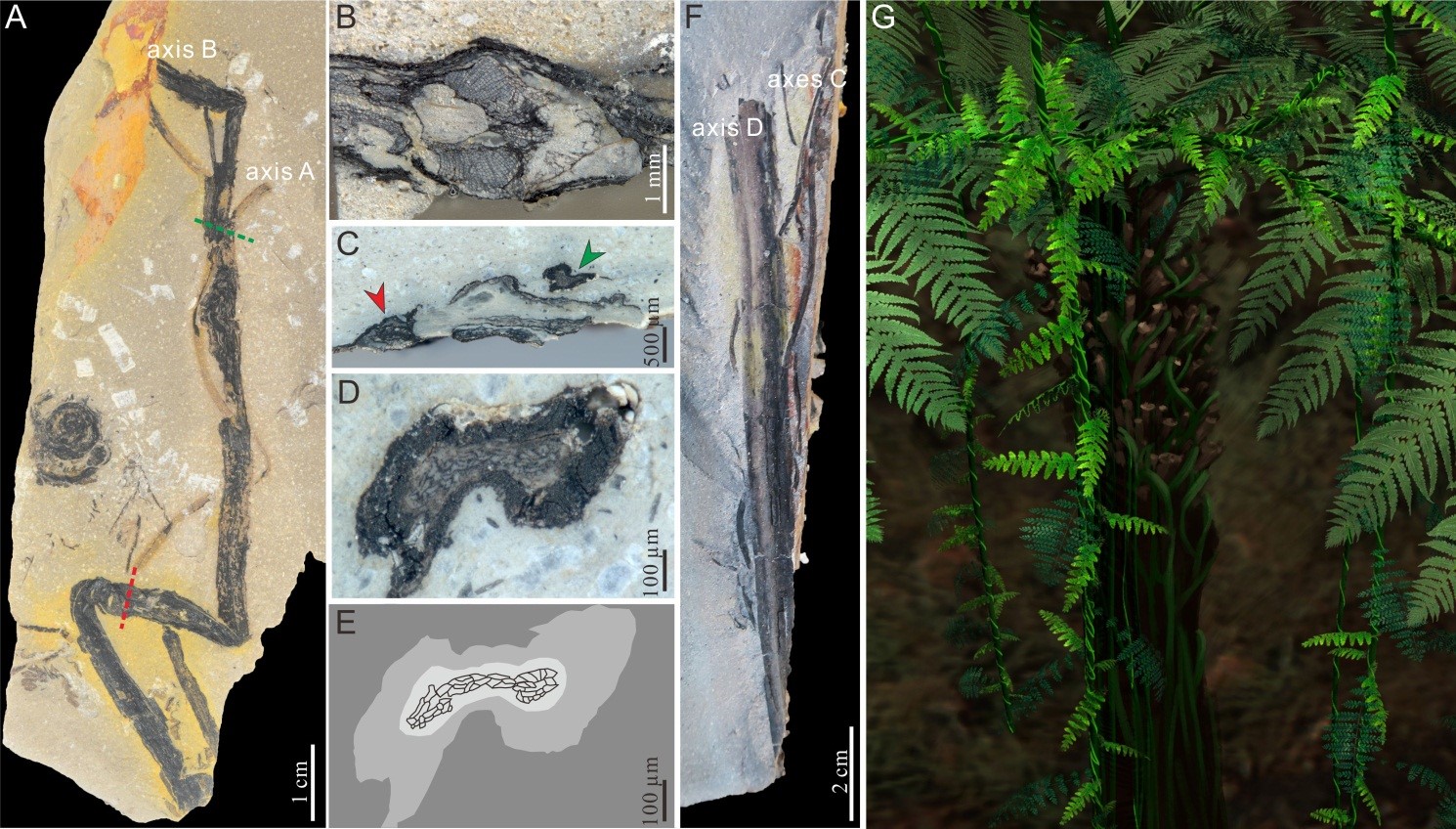
Chirality is present at all scales from molecule to galaxy, and plants are not exceptional. Plants with twisted axes are usually climbing "twiners". In extant twiners, more than 90% of them prefer fixed right-handed helices. However, researchers reported in Current Biology that a Permian fern fossil possessed a fixed left-handed twining direction.
In geological history, the climbing habit may have already been present in the first Middle Devonian forests. By late Carboniferous climbing was more common and diverse. However, direct preservation of a fossil twiner has only been documented in the Miocene Shanwang Formation of Eastern China (ca. 16 Ma), although the identity of the twiner is difficult to establish and it seems to be a self-twiner.
Recently, researchers form the Nanjing Institute of Geology and Palaeontology of the Chinese Academy of Sciences, the West Bohemian Museum in Pilsen and the Stanford University reported a new fossil twiner from the early Permian Wuda Tuff fossil Lagerstatte of Inner Mongolia, China (ca. 298 Ma). The complete rotation confirms the twining habit dating back to the Paleozoic.
The high fidelity of 3-D preservation allows the identification of the twiner and host plant. The twiner possesses a slightly C-shaped xylem strand anatomy without any secondary tissues and is thereby interpreted as a fern rachis. The associated plant fragments and attached pinnules from another twining specimen indicate the twiner to be an anachoropterid fern, which possesses a fixed left-handed twining direction.
The host possesses a eustelic stem anatomy that generally indicates a seed plant affinity. It can be further classified as Callistophytales on account of additional material with the same stem anatomy and prickle structures collected from the same forest.
Moreover, the host possesses heterophyllous pinnules on their fronds with some pinnules modified into pinnate linear lobes that terminate in swollen structures previously interpreted from similar material as adhesive pads, suggesting that the host plant is also a climber.
The dual-climbing phenomenon is known from modern tropical and subtropical forests, but has never been documented in the fossil record. Although indirect evidence of the climbing habit was already common from the late Carboniferous tropical forest ecosystems, here direct preservation of the twining habit as well evidence of the dual-climbing phenomenon indicates a high degree of ecological complexity in early Permian swamp forests.
The study was supported by the Strategic Priority Research Program (B) of Chinese Academy of Sciences, the National Natural Science Foundation of China, the State Key Laboratory of Palaeobiology and Stratigraphy, the Visiting Professorship for Senior International Scientists of the Chinese Academy of Sciences, and the Grant Agency of Czech Republic.

Reconstruction of the dual-climbing phenomenon. (Image by NIGPAS)

86-10-68597521 (day)
86-10-68597289 (night)

86-10-68511095 (day)
86-10-68512458 (night)

cas_en@cas.cn

52 Sanlihe Rd., Xicheng District,
Beijing, China (100864)

